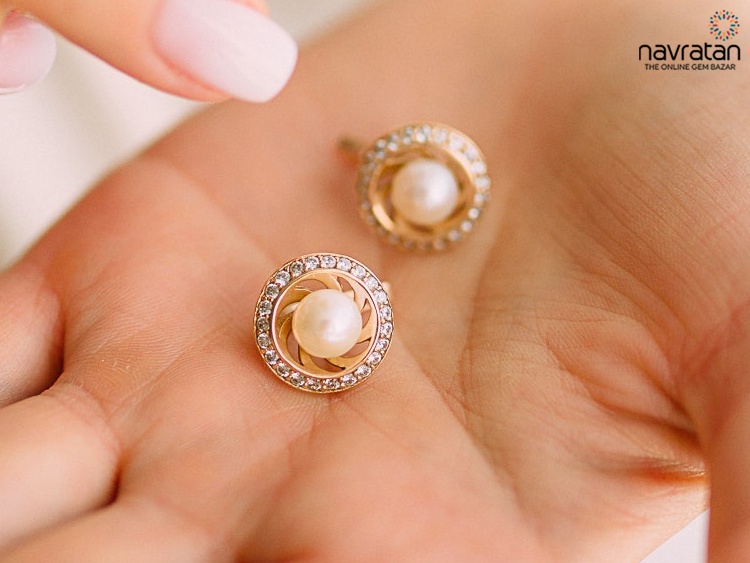Introduction
Pearls have captivated humanity with their timeless beauty for centuries. These lustrous gems, formed within the soft tissue of certain mollusks, hold a special place in jewelry and fashion. If you're intrigued by the allure of pearls and wonder about their cost, this article will guide you through the factors influencing pearl prices and help you make informed decisions when purchasing these exquisite gems.
- Understanding Pearl Types
Natural Pearls
Natural pearls are exceedingly rare and highly valued due to their organic formation. They occur naturally when an irritant, such as a grain of sand, finds its way into an oyster or mollusk. Layer by layer, the mollusk secretes nacre, resulting in the formation of a pearl over time. The scarcity of natural pearls significantly impacts their cost.
Cultured Pearls
Cultured pearls are more accessible and affordable than natural pearls. They are created through a controlled process by inserting a nucleus (usually a mother-of-pearl bead) into an oyster or mussel. Over several years, the mollusk coats the nucleus with nacre, producing a cultured pearl. The type of mollusk, farming conditions, and size influence the price of cultured pearls.
- Factors Affecting Pearl Prices
Size
One of the primary determinants of a pearl's value is its size. Larger pearls command higher prices due to their rarity and eye-catching appearance. Whether natural or cultured, pearls are measured in millimeters, with sizes ranging from small seed pearls to impressive South Sea pearls.
Shape
The shape of a pearl contributes to its cost. Perfectly round pearls are the most sought-after and, therefore, more expensive. However, other unique shapes like baroque pearls can also have their appeal, offering more affordable options for pearl enthusiasts.
Color
Pearls come in a variety of colors, including white, cream, pink, black, and even rare hues like blue and green. The desirability and rarity of certain colors impact their market value. For instance, black Tahitian pearls are highly valued for their exotic appearance.
Luster
Luster refers to the surface brilliance and shine of a pearl. Pearls with a mirror-like luster are considered of higher quality and command premium prices. The way light reflects off the pearl's surface adds to its visual appeal.
Surface Quality
The surface quality of a pearl is essential in determining its value. Pearls with few or no blemishes are considered higher grade and are more expensive. Imperfections, such as spots, bumps, or cracks, can lower a pearl's price.
Origin
The geographical origin of a pearl can influence its value. Certain regions are renowned for producing specific types of pearls. For example, the Persian Gulf is known for natural pearls, while Japan is famous for its Akoya cultured pearls.
- Types of Pearls and Their Costs
Akoya Pearls
Akoya pearls, renowned for their perfectly round shape and high luster, are the classic choice for pearl necklaces and earrings. Prices for Akoya pearls range from $100 to $10,000, depending on their size, luster, and surface quality.
Freshwater Pearls
Freshwater pearls come in a wide range of colors and shapes, making them versatile and affordable. A strand of freshwater pearls can cost anywhere from $50 to $500, depending on factors like size, shape, and luster.
South Sea Pearls
South Sea pearls, among the largest and rarest pearls, are prized for their luxurious size and satiny luster. These exquisite gems can cost from $1,000 to over $100,000, depending on their size, shape, and origin.
Tahitian Pearls
Tahitian pearls, often referred to as black pearls, are admired for their unique color range and stunning overtones. Prices for Tahitian pearls start around $500 and can exceed $10,000, depending on their size, color, and luster.
- Investing in Pearls
Value Retention
Pearls, especially high-quality natural pearls, have historically proven to be excellent investment pieces. They retain their value well over time, making them a wise choice for those seeking both beauty and investment potential.
Pearl Care
To ensure the longevity and beauty of pearls, proper care is essential. Avoid exposing them to harsh chemicals, extreme temperatures, or prolonged exposure to sunlight. Regularly wiping them with a soft cloth after wear helps maintain their luster.
Conclusion
In conclusion, the cost of pearls varies significantly based on factors such as size, shape, color, luster, surface quality, and origin. While natural pearls remain the most valuable, cultured pearls offer beautiful alternatives at more accessible price points. When choosing pearls, consider your preferences and budget, as there is a pearl suitable for every taste and style.
FAQs
Q1: Are freshwater pearls genuine pearls?
Yes, freshwater pearls are genuine pearls. They are formed in freshwater mussels and offer a wide range of colors and shapes.
Q2: Can I buy natural pearls today?
Natural pearls are exceedingly rare, and their availability is limited. Most pearls available in the market are cultured pearls.
Q3: Which type of pearl is the rarest?
Natural pearls are the rarest type of pearls, making them highly valuable and sought-after by collectors.
Q4: Can I wear pearls every day?
While pearls are durable, it's best to avoid wearing them during activities that may subject them to potential damage.
Q5: What makes Tahitian pearls unique?
Tahitian pearls are unique for their striking dark colors, which range from peacock green to deep black, and their mesmerizing overtones.


No comments yet